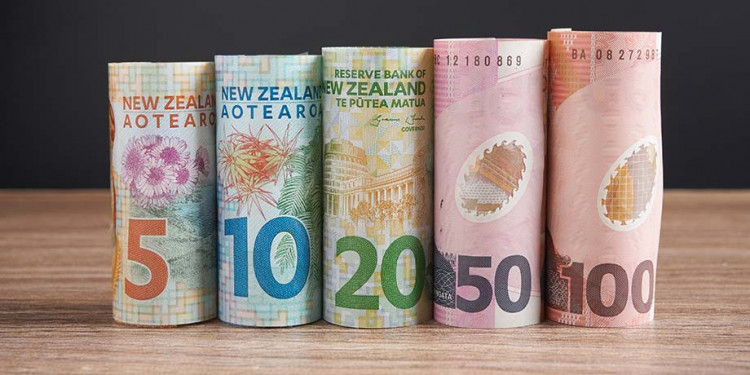
The Kiwi dollar has one of the lowest rates of counterfeit currency in the world, but that doesn’t mean fraudulent notes don’t slip through the cracks at times.
Around 460 notes worth $27,000 were accepted by retailers in Canterbury between March to July, according to the Reserve Bank, which is an ongoing police investigation.
“The fake notes are mainly being passed at fast food outlets and service stations.
“They are of a variety of denominations and from both series of polymer notes in circulation,” the RBNZ said.
Counterfeit cash is usually injected into the system when fraudsters slip the fake notes in with real notes when they pay for a meal at a restaurant in dim lighting for example, the Westpac fraud team says.
“If somebody ends up with a note that does not appear to be correct, they should take it into their bank,” they said.
New Zealand notes are made from a type of plastic called polymer, which makes forgery more difficult because most counterfeits are just paper.
“All the fakes are easily detected through having the wrong feel as they are paper and will easily tear on an edge, unlike genuine polymer notes,” the RBNZ says.
The older note series with smaller windows should have both a see-through plastic fern and a see-through oval window with the denomination value showing.
The newer note series with large windows should have a fern, map of New Zealand, miniature of the large printed bird, and denomination showing in the large window.
There is also a smaller fern window. The large window fakes also don’t have a colour bar which appears to roll up and down the smaller printed bird when the note is tilted, the RBNZ say.
The Reserve Bank of New Zealand has given the following 10 tips to check for counterfeit cash for all denominations of Kiwi notes:
Check the windows:
“Inside the large clear window is a hologram featuring a fern and a map of New Zealand.
“It also contains the same bird featured on the left-hand side of the note. There is also an embossed print denomination below the hologram.”
All washed up:
“Polymer notes and their inks are water resistant.
“There should not be any blotches or running of the inks.”
Get out the glass:
“Tiny micro-print of the note denomination should be visible with a magnifying glass.
“On the large numeral, the letters ‘RBNZ’ are in microprint.
“On the front of the note, the foil inside the window reads ‘RBNZ 10 TE PUTEA MATUA 10’.
“On the back are the numbers ‘10101010...’ and ‘RBNZ’, between New Zealand and Aotearoa.
Feel for real:
“Polymer notes have raised printing, which can be felt when you run your fingers over it.”
It’s a serial:
“Each note has an individual serial number printed horizontally and vertically and these numbers match exactly.
“If the serial numbers are missing, or you have several notes with the same serial number on all of them, some or all of those notes could be counterfeit.”
Does it glow:
“Most commercial papers used in forgeries glow under an ultraviolet light, but our notes use special links which look dull except for specific features that glow brightly.
“For example, the front of each genuine note includes a fluorescent patch showing the denomination.”
No to fuzz:
“All images should appear sharp and well defined – not fuzzy and washed out.”
Check for the change:
“The colour of the bird changes when the note is tilted, with a rolling bar going diagonally across.”
Line it up:
“When the note is held up to the light irregular shapes on the front and the back of the note combine like puzzle pieces to show the note’s denomination.”
Rip into it:
“Polymer notes are tough, but most counterfeits are only paper.
“Moderate force should not start a tear in the note.”
Polymer notes were first used in Australia and they have recently been introduced to the United Kingdom as well as many other countries following suit.
US dollar notes are instead made from 75% cotton and 25% linen and New Zealand’s banknotes were also printed on paper made from cotton until 1999.
Below is a comparison of counterfeit rates across a selection of countries compiled by RBNZ from central banks’ annual reports.
The unit is parts per million (PPM) notes in circulation:
|
COUNTRY |
YEAR |
PPM |
|
UK |
2018 |
127 |
|
Mexico |
2018 |
67 |
|
Euro Zone |
2018 |
26 |
|
Australia |
2016 |
16 |
|
Canada |
2017 |
11 |
|
Norway |
2017 |
5.6 |
|
Switzerland |
2018 |
2.5 |
|
Denmark |
2018 |
2.0 |
|
Sweden |
2018 |
1.7 |
|
NZ |
2017/18 |
0.8 |
|
USA |
|
Not Available |
